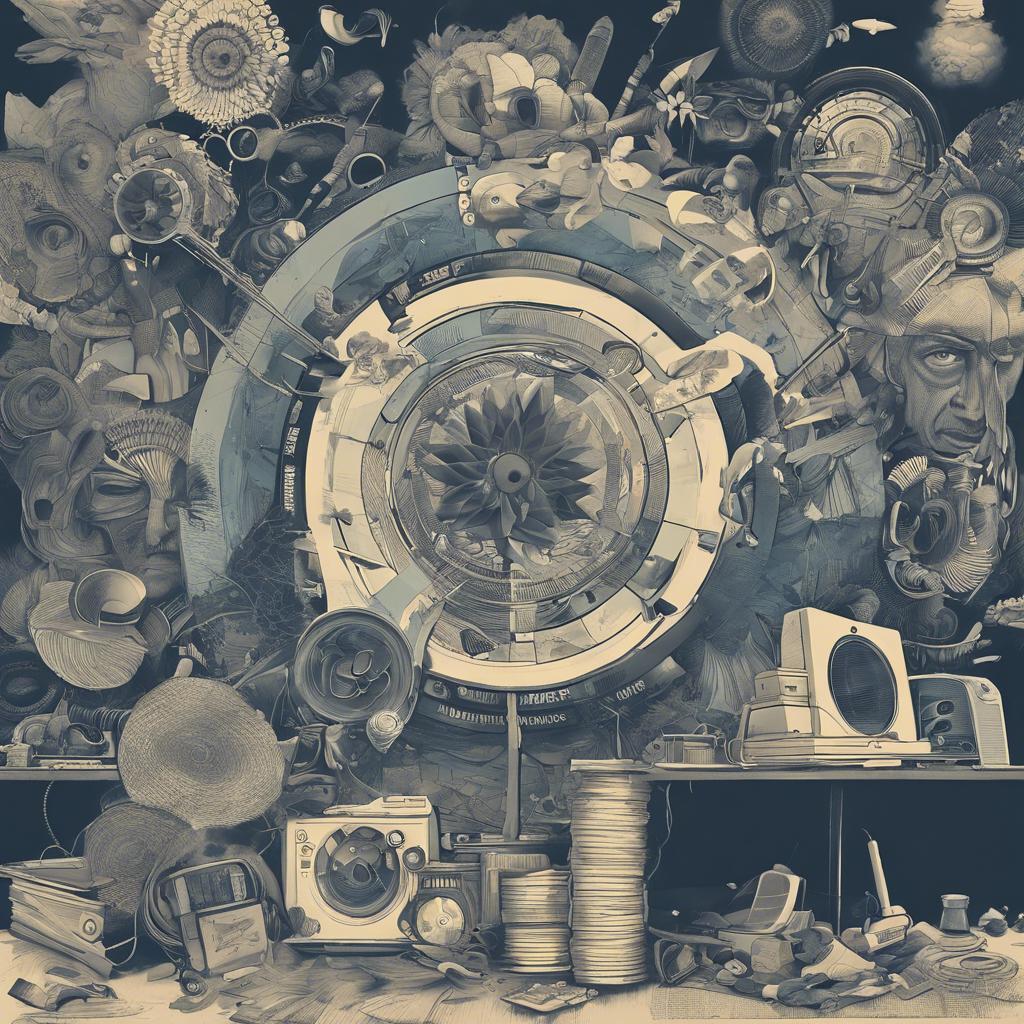In the midst of postwar America, a burgeoning movement emerged that challenged the dominant social norms and values of the time. Known as the counter culture, this rebellious wave of artists, activists, and thinkers sought to disrupt the status quo through art, music, and political action. At the heart of this movement was the counter culture blues, a genre of music that captured the frustration, disillusionment, and longing of a generation in revolt. In this article, we will explore the origins, influences, and impact of the counter culture blues on American society during the tumultuous 1960s and beyond.
Step Into the World of Cheryl Bolen
Dive into the enchanting stories of love, intrigue, and elegance set in the Regency Era. Cheryl Bolen's novels offer timeless romance and captivating tales that will leave you wanting more.
Explore Cheryl Bolen's Books Now
Origins of Counter Culture Blues Movement
The origins of the Counter Culture Blues Movement can be traced back to the tumultuous social and political landscape of the 1960s. Emerging as a response to the mainstream culture of the time, this movement sought to challenge traditional norms and values through its music, art, and activism. Influenced by the civil rights movement, anti-war protests, and the hippie counterculture, the Counter Culture Blues Movement provided a voice for those who felt marginalized and oppressed.
One of the key figures in the Counter Culture Blues Movement was legendary musician Bob Dylan. Known for his thought-provoking lyrics and rebellious spirit, Dylan’s music captured the essence of the movement and became an anthem for those seeking change. Other influential artists such as Janis Joplin, Jimi Hendrix, and The Doors also played a significant role in shaping the sound and message of the movement.
The Counter Culture Blues Movement was not just about music; it was a way of life. Embracing ideas of freedom, equality, and creativity, participants of the movement sought to break free from the constraints of mainstream society and forge a new path forward. Through their music, art, and activism, they challenged the status quo and inspired future generations to question authority and strive for a more just and equitable world.
Impact on Music and Society
Counter culture blues emerged as a defining genre of music in the mid-20th century, challenging the status quo and pushing boundaries in both music and society. Artists like Bob Dylan, Janis Joplin, and Jimi Hendrix used their music to rebel against mainstream culture, advocating for social change and political activism. Their lyrics often addressed issues such as civil rights, the Vietnam War, and drug use, sparking important conversations and inspiring a new generation of activists.
One of the most significant impacts of counter culture blues was its ability to unite individuals from diverse backgrounds under a common cause. The music served as a rallying cry for those who felt disenfranchised by society, bringing together people from different races, genders, and socioeconomic statuses. This sense of unity and solidarity played a crucial role in the civil rights movement, anti-war protests, and other social justice movements of the time.
Despite facing criticism and backlash from mainstream society, counter culture blues ultimately paved the way for greater diversity and acceptance in the music industry. By challenging traditional norms and pushing the boundaries of musical expression, artists in this genre opened the door for future generations to explore new genres and styles. The legacy of counter culture blues continues to influence contemporary music and society, reminding us of the power of music to inspire change and foster connections across cultural divides.
Key Figures and Influential Albums
Key Figures
Some of the key figures in the counter culture blues movement include:
- Bob Dylan: Known for his poetic lyrics and protest songs, Dylan’s albums like “Highway 61 Revisited” and “Blonde on Blonde” were influential in shaping the sound of the counter culture blues.
- Janis Joplin: Joplin’s raw and powerful vocals on albums like “Cheap Thrills” and “Pearl” captured the spirit of the counter culture movement.
- Jimi Hendrix: With his groundbreaking guitar work and psychedelic sound, Hendrix’s albums like ”Are You Experienced” and “Electric Ladyland” pushed the boundaries of blues rock.
Influential Albums
Some of the albums that made a significant impact on the counter culture blues movement include:
- “The Freewheelin’ Bob Dylan” by Bob Dylan: This album featured iconic songs like “Blowin’ in the Wind” and “A Hard Rain’s a-Gonna Fall” that became anthems for the civil rights movement.
- “Cheap Thrills” by Big Brother and the Holding Company: Featuring Janis Joplin on vocals, this album showcased the band’s bluesy rock sound and Joplin’s powerful voice.
- “Electric Ladyland” by The Jimi Hendrix Experience: Hendrix’s third studio album was a psychedelic masterpiece that blended blues, rock, and experimental sounds in tracks like “Voodoo Child (Slight Return)” and “All Along the Watchtower.”
Embracing the Counter Culture Blues: Recommendations for Listeners
As we immerse ourselves in the world of counter culture blues, it is important to explore the depths of this unique genre and appreciate its rebellious spirit. Here are some recommendations for listeners looking to fully embrace the essence of counter culture blues:
1. Listen to the classics: Start by delving into the foundational artists of the counter culture blues movement, such as Bob Dylan, Janis Joplin, and Jimi Hendrix. Their groundbreaking music paved the way for future generations of musicians to embrace the blues with a rebellious edge.
2. Support independent artists: Seek out emerging artists who are pushing the boundaries of traditional blues music and infusing it with modern influences. By supporting these independent musicians, you are contributing to the continued evolution of the counter culture blues movement.
Wrapping Up
the movement of counter culture blues in the mid-20th century served as a reflection of the social, political, and cultural upheaval of the time. Through their music and lyrics, artists shed light on issues of racial inequality, war, and the struggle for civil rights. Despite facing challenges and opposition, these musicians paved the way for future generations to express themselves and challenge the status quo through their art. As we continue to explore the impact of counter culture blues, we can appreciate the lasting legacy it has left on the music industry and society as a whole.


